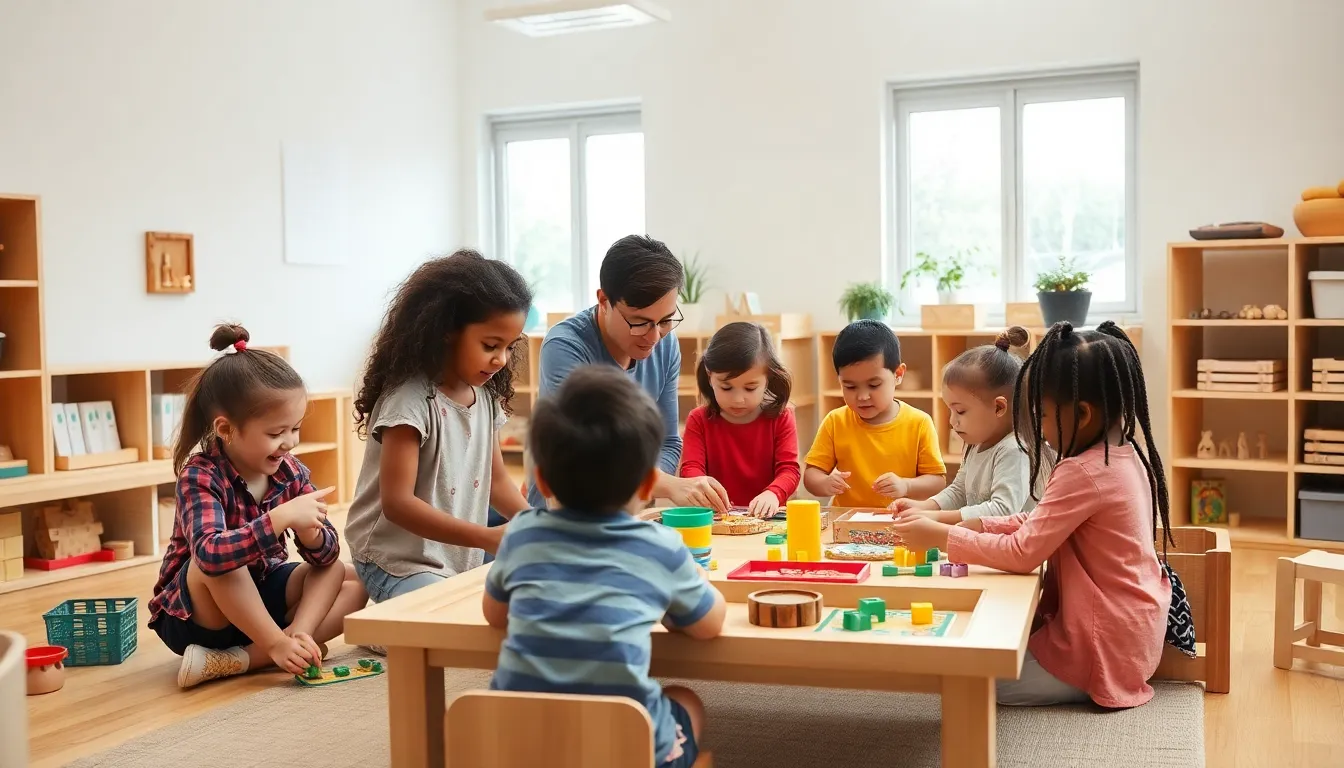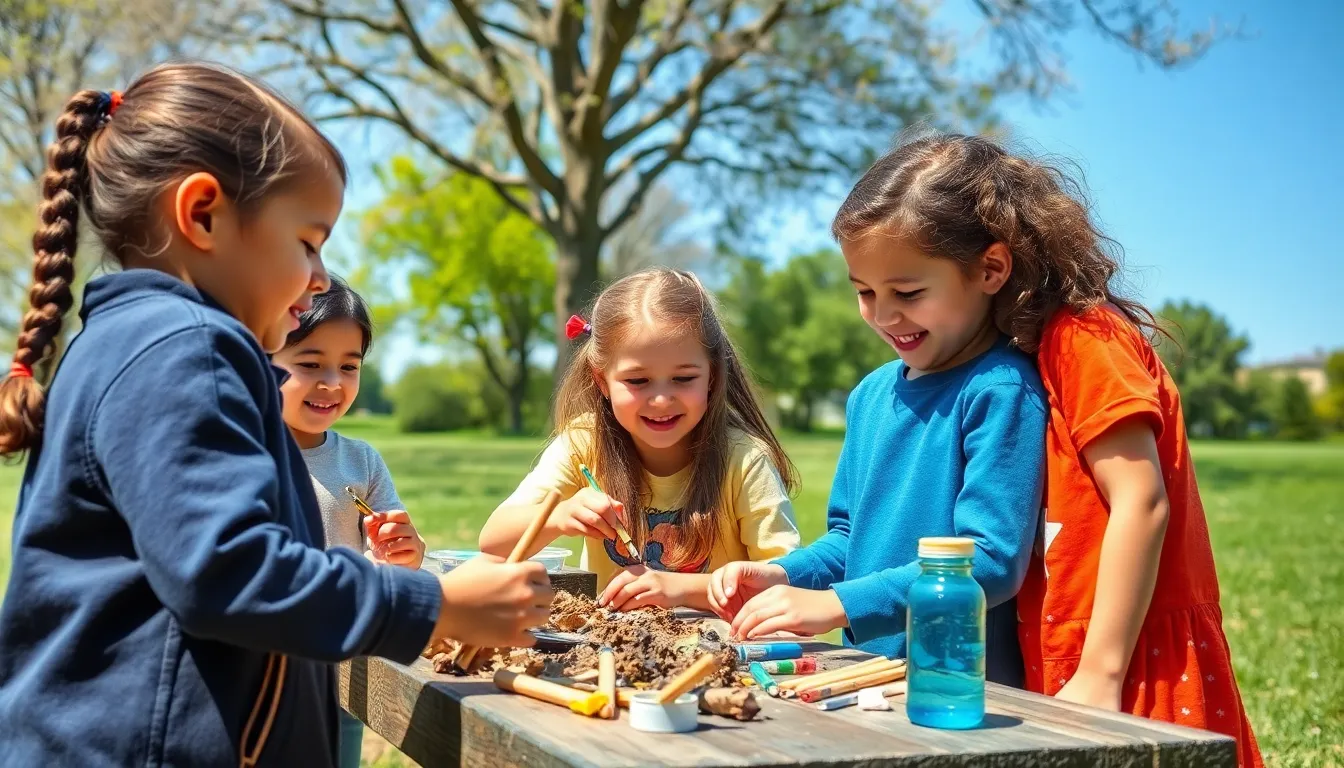In a world where traditional classrooms can feel like a never-ending cycle of lectures and tests, alternative education offers a refreshing twist. Imagine a place where learning happens through real-world experiences, creativity, and a sprinkle of fun. It’s like trading in your stiff desk for a cozy bean bag while exploring the wonders of knowledge in a way that actually excites students.
Table of Contents
ToggleOverview of Alternative Education
Alternative education encompasses various approaches outside conventional classroom settings. This model prioritizes student-centered learning experiences that focus on individual needs and interests. Learning occurs through hands-on activities, collaborative projects, and community involvement, creating a dynamic educational environment.
Models like Montessori, Waldorf, and unschooling demonstrate the diversity within alternative education. These methods emphasize creativity, critical thinking, and emotional development, often prioritizing personal growth over standardized testing.
Students engaged in alternative education frequently report higher levels of motivation and engagement. According to a study by the National Center for Education Statistics, 12% of U.S. schools offer alternative programs tailored to non-traditional learners.
Curricula in alternative education can be fluid and responsive to student input. Experiential learning allows students to explore subjects through real-life applications, fostering a deeper understanding of complex concepts. Individual projects might include internships, community service, or travel, directly connecting lessons to the world outside the classroom.
Diverse assessment methods also thrive in alternative education settings. Instead of relying solely on traditional exams, educators often utilize portfolios, presentations, and peer reviews. This holistic approach reinforces student achievement by evaluating growth, effort, and creativity rather than memorization.
Alternative education provides valuable opportunities for personal and academic development. Innovation continues to rise within this educational landscape as more families seek learning options that reflect their beliefs and values.
Types of Alternative Education

Alternative education includes several distinctive approaches designed to enhance student engagement and adaptability. These methods prioritize individual learning styles and real-world relevance, fostering creativity and critical thinking.
Montessori Method
Montessori education emphasizes independent learning through hands-on experiences. Materials are carefully designed to facilitate self-directed exploration. Classrooms often feature mixed-age groups, allowing older students to mentor younger peers. This structure encourages collaboration and social development. Teachers act as guides rather than traditional instructors, facilitating the child’s unique learning path. Evidence shows that Montessori students frequently display strong problem-solving skills and academic motivation.
Waldorf Education
Waldorf education integrates academics with arts and practical skills. It promotes an imaginative curriculum designed to foster holistic development. Classrooms often focus on storytelling, creative play, and artistic expression, nurturing emotional growth. Teachers employ a consistent method with the same class staying together for multiple years, which helps build strong community bonds. The approach aims to cultivate a balance between intellectual, artistic, and practical abilities, preparing students for diverse life challenges.
Sudbury Schools
Sudbury schools provide a unique, self-directed learning environment. Students have complete control over their education, choosing what, when, and how to learn. This autonomous approach develops responsibility and intrinsic motivation. Governance within these schools often includes a democratic process where students and staff share decision-making authority. Evidence suggests that graduates excel in creativity and self-confidence, often becoming lifelong learners in various fields.
Benefits of Alternative Education
Alternative education offers significant advantages, particularly in fostering a supportive learning environment. It emphasizes personalized experiences that cater to individual needs and learning styles.
Personalized Learning
Personalized learning remains a cornerstone of alternative education. Each student engages with tailored curricula that align with their interests and strengths. Students experience an educational model designed for them, promoting ownership over their learning journey. This flexibility often leads to increased motivation and enthusiasm for learning. Teachers also play an essential role, acting as guides rather than traditional instructors, facilitating rather than directing. The direct correlation between personalized approaches and enhanced student engagement represents a major benefit of alternative education, making it a more effective choice for many.
Flexible Curriculum
Flexible curriculum adapts to students’ evolving interests and societal changes. Traditional education systems often enforce rigid structures, while alternative education promotes fluidity in lesson plans. This adaptability encourages creativity and critical thinking, ensuring students connect academic content to real-world scenarios. Instead of a one-size-fits-all model, educators in alternative settings develop courses that resonate with students, making learning relevant. Additionally, changing assessments emphasizes student growth over fixed benchmarks, showcasing progress through multiple avenues. The combination of a flexible curriculum and diverse assessment methods marks another significant advantage of alternative education.
Challenges of Alternative Education
Alternative education faces notable challenges, including accreditation issues and limitations in funding and resources.
Accreditation Issues
Accreditation presents significant hurdles for many alternative education programs. Without proper accreditation, schools struggle to gain acceptance from colleges and employers. Many students encounter difficulties transferring credits to traditional schools. In some cases, lack of recognition can diminish the perceived value of alternative education experiences. Navigating the complex accreditation process often becomes a barrier, preventing innovative programs from receiving necessary validation. Improving awareness about different accreditation standards may help in bridging these gaps.
Funding and Resources
Funding and resources are critical challenges for alternative education systems. Many alternative education institutions rely on public funding, which can be limited or inconsistent. Nontraditional approaches often require specialized materials and training, further straining budgets. Teachers may lack access to resources that enhance experiential learning opportunities. Securing grants and private donations can become vital for maintaining and expanding programs. Overall, financial limitations frequently restrict the growth and accessibility of alternative education.
Case Studies in Alternative Education
Alternative education showcases a variety of successful programs dedicated to innovative teaching methods. Schools like Montessori emphasize hands-on learning, engaging students through tangible experiences. Waldorf education focuses on integrating arts and academics, nurturing creativity alongside intellectual development. Sudbury schools provide a self-directed environment, allowing students to explore interests freely. Each model presents unique approaches that foster individual growth and self-discovery.
Student outcomes in alternative education highlight impressive results. Research shows that students in alternative settings display increased motivation and engagement. A notable 12% of U.S. schools now offer programs tailored to non-traditional learners, reinforcing a growing trend. Graduates from alternative education often demonstrate strong critical thinking and problem-solving skills. They frequently excel in collaborative work and exhibit a sense of responsibility for their own learning journey. These outcomes reflect the effectiveness of personalized educational experiences that meet diverse needs.
Alternative education represents a transformative shift in how students engage with learning. By prioritizing individual needs and interests it fosters an environment where creativity and critical thinking thrive. This approach not only enhances motivation but also prepares students for real-world challenges.
Despite facing challenges like accreditation and funding, the benefits of alternative education are becoming increasingly clear. As more families seek personalized educational experiences, the demand for innovative programs continues to grow. The future of education may very well depend on embracing these diverse learning models that cater to the unique strengths of each student.





